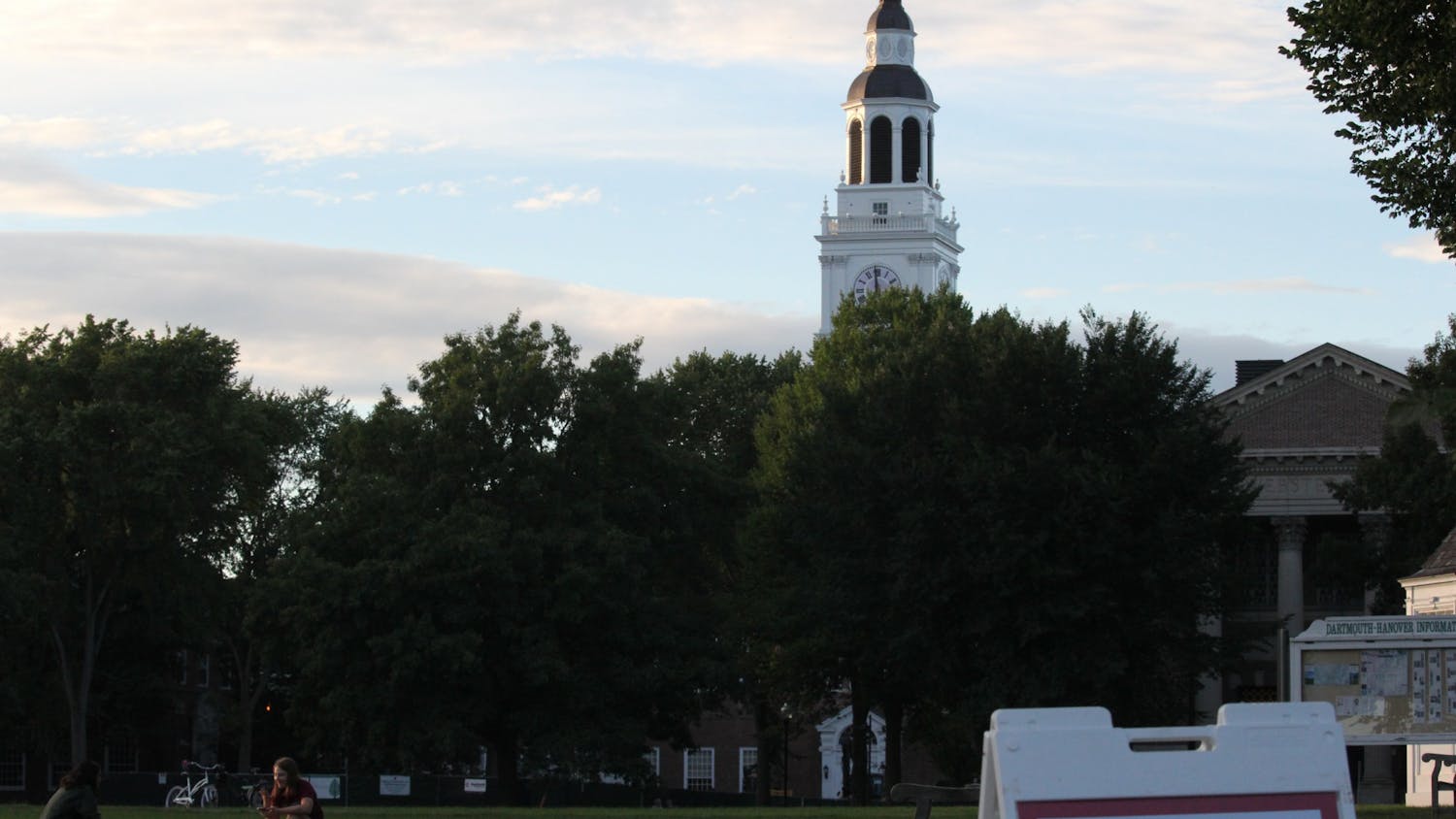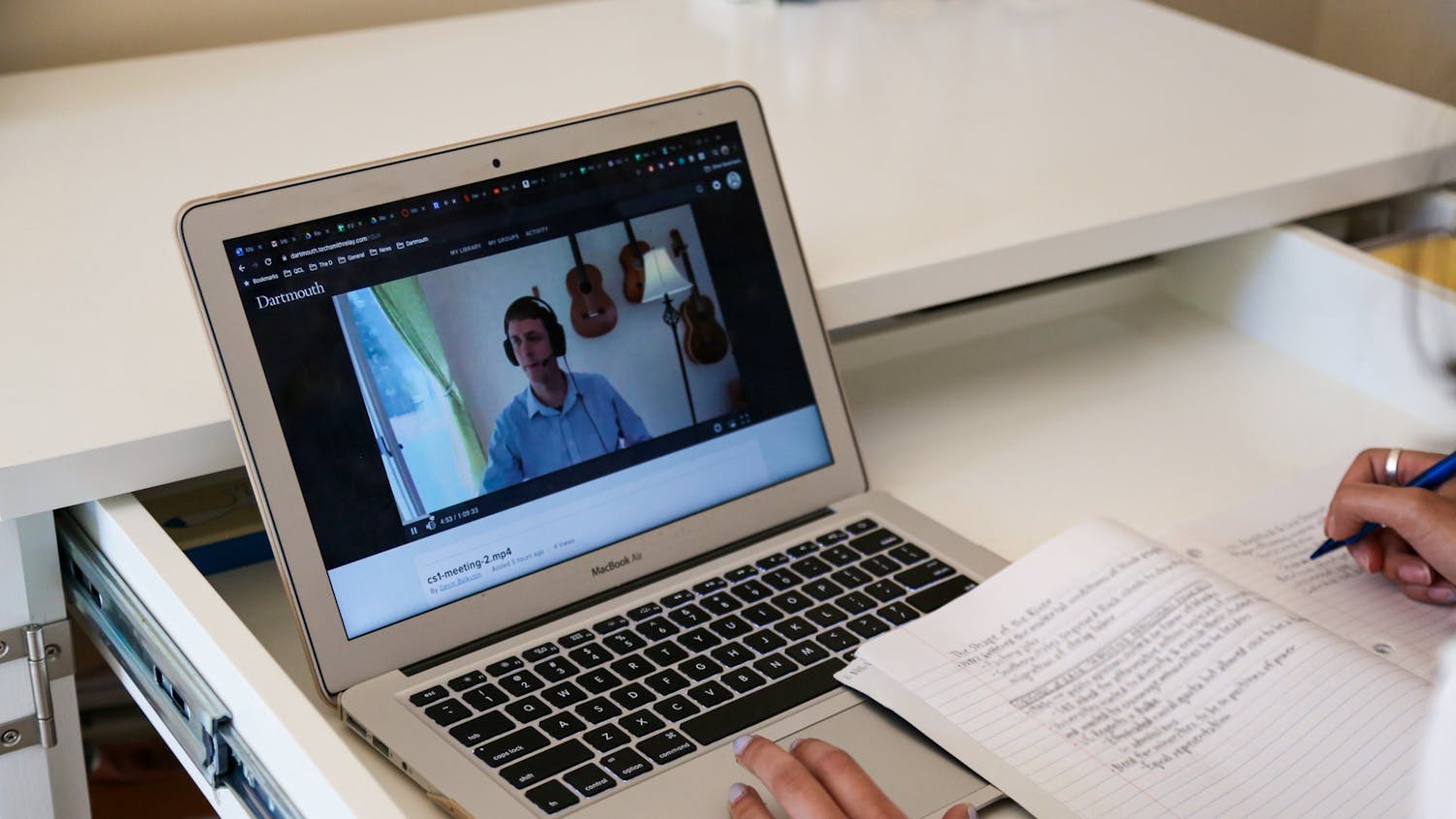“I almost forgot how it feels like to be sitting in a chair and to have the professor right there in front of you teaching.”
Like most Dartmouth freshmen before this quarter, Jeffrey Lam ’24 had not set foot in an actual classroom since March, when he was midway through the second semester of his senior year in high school. For the vast majority of Dartmouth students, that fact has remained unchanged well into the fall quarter: Of the 885 classes being offered this term, the vast majority of them — around 770 — are completely virtual, a decision prompted by the College’s strict COVID-19 rules.
However, a few professors have opted to hold in-person sections of their classes in order to provide students some semblance of a normal college experience. Lam is currently enrolled in a section of ECON 22, “Macroeconomics,” a fully in-person class taught by economics professor Marjorie Rose in Carson Hall, along with CHIN 4, “Advanced Beginning Chinese” and WRIT 5, “Expository Writing,” both of which are held entirely over Zoom. He feels that the in-person class is much more effective than the virtual options.
Lam said that he can get easily distracted taking class from his computer. In contrast, he added, in-person classes provide a learning environment that makes it easier for him to stay focused.
In-person classes have also allowed students to interact with each other more directly than they otherwise could over Zoom.
“To be honest, over the Zoom classes, I didn’t meet anyone; I barely knew who was in my class,” Lam said. “Now, I think I can recognize most of the people in my class, and I have been able to make friends with a couple of people.”
Along with providing the benefit of closer, more direct instruction and interaction, students have also noted that having an in-person class can help break the monotony of the “wake up, Zoom, sleep, repeat” cycle. Olivia Gomez ’22, who is taking two in-person classes this quarter, said that having classes in person has made her days feel less repetitive.
“I’m someone who needs to get up and have places to be every day. At least for me during the spring term, when it was virtual, it was really hard to compartmentalize [my] day,” Gomez said. “Having to physically go to a library or building on campus I think is super huge.”
The two sections of ECON 22, like all of the 114 fully or partially in-person classes this semester, are subject to a variety of safety protocols, including socially distanced desks, regular sanitation of the classroom before and after classes and mask-wearing throughout the duration of the class period. Teachers are also equipped with individual toolkits, filled with items like new chalk and sanitation materials, in order to reduce the risk of any COVID-19 transmission.
College resources like the Dartmouth Center for the Advancement of Learning and Classroom Technology Services also provide tools for professors to adapt in-person teaching to the pandemic. Religion professor Emily Simpson, who is teaching REL 20.6, “Shamanism: Agony and Ecstasy,” says that the College’s robust COVID-19 guidelines have helped her in-person section feel secure.
“I’ve been very impressed with Dartmouth’s COVID response [and] the amount of support available for professors,” Simpson said.
Simpson said that Classroom Technology Services had reached out to her to help her pick the best classroom for her in-person class, a task that has taken on a new importance this term. With social distancing guidelines in place, classrooms for in-person classes have to be spacious enough to accommodate all of the students while still maintaining at least a six-foot distance between each seat. This has led to smaller section sizes and larger classrooms. ECON 22, which is normally capped at 70 students total, only has 41 total students across two in-person sections.
Rose noted that some of the COVID-19 restrictions have made it harder to teach and gauge student satisfaction, especially during her lectures.
“Just talking through a mask for 65 minutes is hard,” Rose said. “[And] a lot of times you can’t read student reactions through a mask.”
Social distancing requirements have hamstrung some of the most quintessential parts of a Dartmouth in-person education: interactive classes with lively small-group discussion. Some professors, like Simpson, have small enough classes that small-group discussions are possible even with College regulations, but in a relatively large class like ECON 22, there are more obstacles.
“If I didn’t have the distancing requirement, I would have more opportunity to do little breakouts into small groups during the lecture; I can’t really do that in person,” Rose said.
Regardless of the obstacles, there seems to be a consensus among the faculty and students involved in the in-person classes: They have been a resounding success so far. If it’s all been going so smoothly, why are there only 26 fully in-person classes and 88 partially in-person classes this fall?
“It was surprising to me how few professors opted in to having in-person classes,” Gomez said. “I think we’re losing out on something in our education that can’t be captured over Zoom.”
With a large number of Dartmouth’s professors belonging to a higher-risk category for COVID-19, teaching in person was a risk that many were unwilling to take. The College has also stipulated that if professors choose to offer an in-person section of a class, they must also offer a remote version of that same class or offer the class during every term of the academic year — a requirement that, while aimed at providing equity for students both on and off campus, would require a substantial amount of extra work for faculty members.
With COVID-19 cases posing a problem at many colleges and universities across the nation, partly because of student noncompliance with distancing guidelines, there were initially concerns that Dartmouth could be next. However, some of these fears have subsided as the term has progressed and the number of COVID-19 cases at the College has remained low.
“Having had Dartmouth students for a year now, I certainly thought that we had a really good chance for students to be responsible, keep to the guidelines and whatnot,” Simpson said. “That has proven to be true, and I do know some professors who weren’t expecting that to be true.”
The success of the in-person experiment this fall has many optimistic for the future. Barring changes for the worse, the encouraging experiences of both faculty and students have made some hopeful for similar in-person classes in the winter and spring.
“We’re kind of the guinea pigs, which is good,” Rose said. “They can kind of figure out what the kinks are this term and hopefully have an opportunity to offer more in-person classes winter and spring. Everyone’s looking forward to being able to do more in-person.”
Although there has not yet been any sign of the number of in-person classes increasing in subsequent terms, the courses that do meet in person have gone smoothly thus far. With a little ingenuity, mindful caution and determination, Dartmouth students and faculty alike prove that in-person learning can work.




